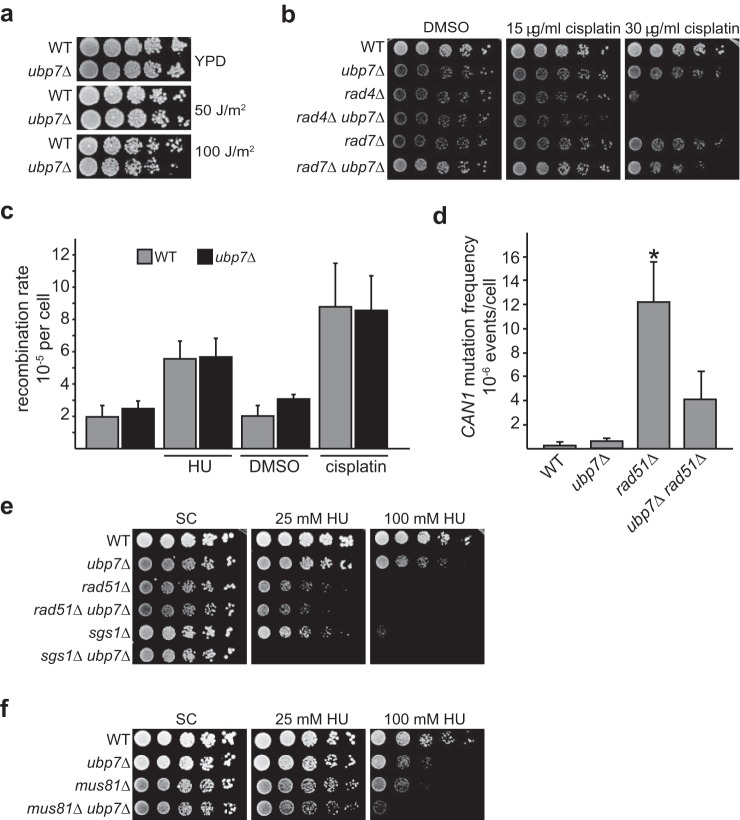FIGURE 2.
Ubp7 is not an NER or HR component. a, 5-fold serial dilutions of the indicated strains on YPD plates exposed to 0, 50, or 100 J/m2 UV radiation. b, 5-fold serial dilutions of the strains as in a, spotted on SC plates with DMSO or the indicated cisplatin concentrations. c, comparison of total recombination rates in a wild-type and ubp7Δ strain chromosomally harboring the direct repeat recombination assay. Cells were grown in SC medium or SC medium containing DMSO as a control compared with cells exposed to 35 mm HU or 10 μg/ml cisplatin for 26 h and then plated. The graph depicts the mean recombination rate from four to five independent trials ± S.D. The recombination rate in WT and ubp7Δ cells is not significantly different by Student's t test for each condition tested. d, spontaneous CAN1 mutation frequency in wild-type, ubp7Δ, rad51Δ, and ubp7Δ rad51Δ. The graph depicts the mean recombination frequency from three independent trials ± S.D. Only the difference between rad51Δ and the wild-type is statistically significant by Student's t test (*, p < 0.05). e, genetic analysis with the HR genes RAD51 and SGS1. 5-Fold serial dilutions were spotted on SC plates containing 25 and 100 mm HU and incubated at 30 °C for 3 days. f, genetic analysis of ubp7Δ with a deletion of MUS81. Serial dilutions of the indicated strains were performed as in a.

